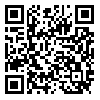BibTeX | RIS | EndNote | Medlars | ProCite | Reference Manager | RefWorks
Send citation to:
URL: http://ijn.iums.ac.ir/article-1-1005-en.html
2- Senior Lecturer, School of Nursing and Midwifery, Tabriz University of Medical Sciences, East Azerbaijan, Iran
3- Senior Lecturer of Epidemiology, Faculty of Health and Nutrition, Tabriz University of Medical Sciences, East Azerbaijan, Iran
4- Assistant Professor, Social Medicine Dept., Tabriz University of Medical Sciences, East Azerbaijan, Iran.
Background & Aim: Mammography and clinical breast examination have been recommended for early detection of breast cancer in asymptomatic women. Health beliefs play an important role in people’s tendency toward participation in health promotion behaviors. The aim of this study was to determine the health beliefs of female health care providers of Tabriz Health Centers about mammography and clinical breast examination.
Material & Methods: It was a descriptive, cross- sectional study. The participants were recruited from 52 health center of Tabriz city by proportional cluster random sampling (n=196). Data was collected by Champion’s Health Belief Model Scale and analyzed using SPSS-PC (v.14).
Results: The findings revealed that 26.6% and 10.7% of the sample had a history of mammography and clinical breast examination respectively. The most prevalent barriers to mammography and breast examination were beliefs about painful nature of mammography (2.45 ± 1.02) and fear of the possible diagnosis of cancer (2.30 ± 1.05). There were significant associations between mammography and marital status (p=0.001) and age (p<0.001) and also between clinical breast examination and age (p=0.02)
Conclusion: Misconceptions and incorrect beliefs about mammography and clinical breast examination could result in low rate of participation in mammography and clinical breast examination. Providing educational programs to correct wrong health beliefs about these examinations is recommended.
Received: 2011/12/19 | Accepted: 2014/08/25 | Published: 2014/08/25
| Rights and permissions | |
 |
This work is licensed under a Creative Commons Attribution-NonCommercial 4.0 International License. |




